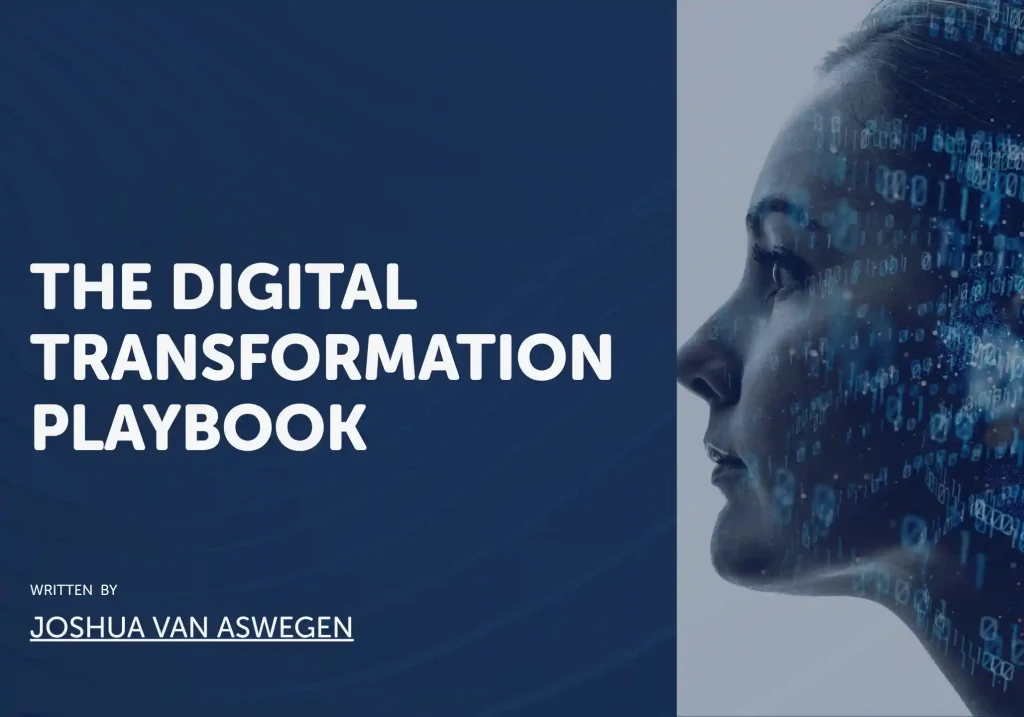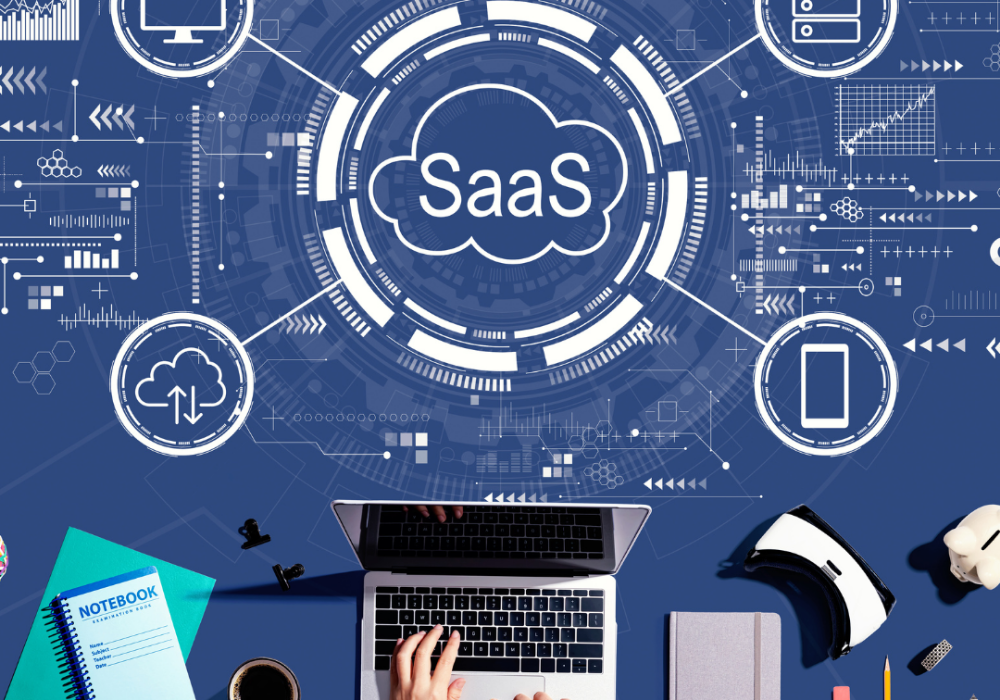The Human Algorithm: Automating a More Ethical Future

The Human Algorithm: Automating a More Ethical Future Over the past decade, automation has become one of the most defining forces reshaping how societies function and how economies grow. Artificial Intelligence (AI) and Robotic Process Automation (RPA) are no longer abstract technologies discussed in research papers or confined to film scripts, they have quietly become part of everyday life. From online customer service systems to energy management in global corporations, automation now influences the way people work, communicate, and even make decisions. The potential benefits of these technologies are enormous, allowing people to focus on more creative or complex tasks. However, this rapid shift toward an automated world also raises important questions about its wider consequences. AI consumes large amounts of energy, contributes to electronic waste, and relies on resource-intensive hardware. It changes the structure of the job market, creating opportunities for some while displacing others, while also impacting the way businesses face accountability for their decisions. Because of this, discussions about automation can no longer focus only on efficiency or innovation. Rather, they should also address sustainability and responsibility. Companies and policymakers are turning to Environmental, Social, and Governance (ESG) principles and the United Nations Sustainable Development Goals (SDGs) to guide this transformation. These frameworks provide a foundation for understanding how automation can serve not only economic progress, but also environmental protection, fair labour practices, and ethical governance. This essay explores automation’s environmental and social consequences, while highlighting the growing role of AI and RPA in shaping both challenges and solutions. It argues that automation, if developed and managed responsibly, can become a tool for achieving long-term sustainability. The question is not whether automation will define the future, but whether humanity can guide its development toward outcomes that are equitable, ethical, and sustainable for all. Environmental Impacts of AI as Automation With environmental concerns growing worldwide, the impact of artificial intelligence (AI) on the planet is now impossible to ignore. AI systems are often celebrated for their efficiency, creativity, and problem-solving power, but running these massive models comes with real environmental costs. Behind every AI-generated image, chatbot reply, or recommendation algorithm is an energy-hungry infrastructure that keeps it all running. Recent studies, including one from MIT News, show that data-centre energy demand has exploded in just the past few years, primarily because of AI’s growth. Just in North America alone, total capacity jumped from 2,688 MW in 2022 to over 5,341 MW by 2023. Globally, data centres consumed around 460 terawatt-hours (TWh) in 2022, roughly the same as France’s total consumption. If this trend continues, that number could rise to 1,050 TWh by 2026, making data centres one of the world’s top five power consumers. Since most electricity still comes from fossil fuels, this kind of digital expansion is clearly unsustainable without a major shift toward renewable energy. Even a single AI model can have a shocking footprint. Training OpenAI’s GPT-3, for example, required about 1,287 MWh of electricity and emitted 552 metric tons of CO₂, enough to drive a car over a million miles, purely to train the model. Every single query to ChatGPT, or to other large models, consumes significantly more power than a normal Google search, about five times more. Multiply that by millions of users and billions of queries, and the scale of energy use becomes enormous. But it’s not only about electricity. AI systems also demand huge amounts of water to keep their processors cool. According to MIT’s analysis, about two litres of water are used per kilowatt-hour of data-centre energy. In water-scarce regions, this can put major pressure on local supplies and ecosystems. On top of that, manufacturing AI hardware like GPUs depends on rare minerals such as lithium, cobalt, and tungsten, which are mined and processed in energy-intensive ways that also create toxic waste. And then there’s the growing mountain of electronic waste. As AI hardware evolves so quickly, data centres frequently replace entire racks of GPUs and servers to keep up. One IEEE Spectrum report estimates that AI-related hardware upgrades could generate 2.5 million tons of e-waste each year by 2030. Considering the world produced around 62 million tons in total in 2022, AI could soon account for a sizable chunk of it. This waste contains hazardous materials like lead and mercury, which can pollute soil and water when dumped in landfills, especially in countries without strong recycling systems. Where RPA Fits In This is where RPA (Robotic Process Automation) enters the picture. While AI often grabs the spotlight, RPA offers a quieter, more sustainable kind of automation. Instead of training massive neural networks, RPA relies on smaller, rule-based systems that automate repetitive office tasks, things like invoice processing, payroll, compliance checks, or data entry. These systems don’t require vast computing power, which means they consume far less energy and generate less electronic waste. RPA can also support sustainability goals directly. For example, companies can use RPA bots to automate the collection and reporting of environmental data by tracking energy use, emissions, or supply chain sustainability metrics. This helps organisations meet the reporting requirements of ESG (Environmental, Social, and Governance) standards, which are now becoming central to corporate accountability. From an SDG (Sustainable Development Goals) perspective, this type of automation supports several of the UN’s key targets, especially SDG 12 (Responsible Consumption and Production), SDG 13 (Climate Action), and SDG 9 (Industry, Innovation, and Infrastructure). RPA can streamline data gathering for sustainability reports, improve energy monitoring in production lines, and reduce paper waste by fully digitising workflows. Basically, RPA shows that automation doesn’t have to come at a huge environmental cost. When combined thoughtfully, AI and RPA together can create a more balanced approach to digital transformation. RPA can handle predictable, rule-based work while AI focuses on higher-level problem solving, ideally using “green AI” models that are optimised for energy efficiency. Companies integrating both technologies under a strong ESG framework could significantly reduce their environmental footprint while still benefiting from automation. ESG and Corporate Responsibility However, all of this depends
When Leaders Fear AI and Automation: How Myth-Making Undermines your chances of success

How leaders frame change matters. And right now, automation is often sold as an overnight revolution that will sweep through every industry and replace everything we do. The reality is different. The headlines about self-driving cars and AI-powered offices have created a distorted view of what automation actually means inside a business. It’s become one of the loudest buzzwords in modern leadership conversations, but the hype often overshadows the practical, achievable wins that drive real progress.
From Paper to Pixels: The Digital Revolution

We live in a time when technology is changing the way we work faster than ever before. From automation to artificial intelligence, digital tools are transforming nearly every aspect of business operations. For many organisations, having to keep up with this pace of change is both exciting and challenging. The idea of digital transformation often sounds promising, bringing greater efficiency, fewer errors, and smarter systems, but the reality can be more complex. Integrating new technologies like these into existing structures requires careful planning, strong leadership, and a clear strategy. This article looks at some of the key factors that influence Robotic Process Automation’s (RPA) successful implementation to help you and your company adapt to the 21st century, focussing on effective integration strategies, data protection, and sustainable implementation. Why This Topic is Relevant In today’s rapidly evolving digital landscape, organisations across all sectors are undergoing significant transformations driven by the implementation of new technologies. Digital transformation is more than just a trend; it is an essential strategy for companies wanting to remain competitive. However, while embracing innovations such as automation, cloud computing, and artificial intelligence, businesses can often face major challenges when integrating these technologies into their existing systems and workflows. Merging legacy infrastructure with modern digital solutions can be complex and risky, particularly when it comes to ensuring data security, system compatibility, and user acceptance. A key component of this transformation is the use of Robotic Process Automation (RPA), which allows companies to streamline repetitive processes, increase operational efficiency, and reduce manual error. Yet, implementing RPA successfully requires more than just technical deployment, it also demands a holistic approach that aligns technology with business goals. Creating an integration-first strategy is fundamental to ensuring that RPA and other digital tools complement existing technologies rather than disrupt them. This strategy requires careful planning, system compatibility, and scalability to be able to work across departments. At the same time, your business will need to remain vigilant of data security and compliance regulations. Because your company will automate workflows and handle large volumes of sensitive information, maintaining strong cybersecurity measures and adhering to compliance standards is important to building trust in the technology and minimizing risks. By understanding these core elements, your company can unlock the full potential of RPA and other emerging technologies, and ensure a smooth transition toward a more connected, intelligent, and efficient digital future. Why Some Businesses Struggle with RPA While RPA holds immense potential for improving efficiency many organisations still struggle to implement it successfully. The challenges businesses face when adopting RPA are often rooted in a combination of human, technical, and organizational factors. One of the most common barriers to RPA adoption is the fear of change among employees. Automation can create anxiety in the workplace, particularly when workers perceive robots as a threat to their job security. Concerns about being replaced by machines or having to learn unfamiliar digital skills can lead to resistance and slow down adoption. Overcoming this fear requires transparent communication and a clear explanation of how RPA can complement human roles rather than eliminate them. When employees understand that automation is intended to reduce repetitive tasks and free up time for more meaningful work, they are more likely to embrace the technology. A lack of technical knowledge is another key challenge. Limited expertise or understanding of RPA can prevent organisations from realising its full benefits. Implementing automation involves not only setting up bots but also redesigning workflows, identifying suitable processes, and maintaining the technology over time. Without trained staff or external support, companies may struggle to select the right tools, troubleshoot errors, or optimise performance. This is why training and partnering with experienced RPA professionals is important to reduce this knowledge gap and allow for a smoother implementation. RPA also depends heavily on the quality of existing business processes. Disorganised or poorly defined workflows can hinder automation because bots operate best when tasks are standardised, repetitive, and rule-based. If a company’s internal procedures are inconsistent or lack clear documentation, it becomes difficult to automate them effectively. Along with this, is the issue of outdated technology. Many organisations still rely on legacy systems that were not designed to integrate with modern automation tools. These systems may lack the necessary interfaces or compatibility for bots to function properly, leading to disruptions or costly custom solutions. Overcoming this challenge often requires a broader digital modernisation effort, ensuring that your company’s IT infrastructure can support automation securely and efficiently. Data security and privacy concerns also play a significant role in RPA hesitancy. Because bots often require access to sensitive company information, such as financial data or customer records, any security flaw can pose serious risks. Without strong cybersecurity measures, businesses expose themselves to data breaches, compliance violations, and reputational damage. Establishing strict access controls, continuous monitoring, and compliance with data protection regulations are essential to building trust in automation initiatives. Additionally, many businesses face legal and regulatory challenges related to RPA. Industries such as healthcare, finance, and government operate under stringent data handling and reporting laws. Your company may hesitate to automate processes for fear of violating regulations or facing penalties. To mitigate these concerns, keep in mind any regulations when incorporating automation solutions. Creating an Integration-First Strategy for RPA A successful digital transformation is more than simply adopting new technologies; it needs thoughtful planning to ensure that RPA work harmoniously within your existing organizational ecosystem. RPA relies on interacting with a variety of software systems to perform its functions, and so an integration-first strategy is essential. This plan ensures that automation enhances, rather than disrupts, current processes and technologies. An integration-first approach to RPA is about aligning automation initiatives with your company’s broader digital infrastructure from the very beginning. This means assessing the current technological landscape, identifying potential compatibility issues, and planning how bots will communicate with existing applications. Many organisations still operate with a mix of legacy systems and modern cloud-based solutions, but without careful integration planning, this mix can lead to fragmented data
The Dual Power of RPA and AI in the Modern Enterprise

The Dual Power of RPA and AI in the Modern Enterprise As the world progresses into an innovative era of the 21st Century, new technologies are being made available for companies to strengthen their business operations. With the fast-paced changes, two automation technologies, Robotic Process Automation (RPA) and Artificial Intelligence (AI), have revolutionised business operations. RPA is the use of software to streamline repetitive, rule-based tasks, which acts as a digital workforce that mimics human actions to allow human workers to focus on more important tasks. It is especially beneficial for handling processes like invoices and data migration. AI simulates human intelligence, bringing more advanced problem-solving, data analytics, and decision-making capabilities to the table. Together, these technologies represent a new era of intelligent automation and give companies the opportunity to innovate, improve their efficiency, and adapt to a constantly evolving economy. Their benefits and limitations are numerous, and these can be difficult to comprehend. Thus, questions can arise over what technology is better for you and your company. For example, with AI progressing faster and making its way into many different facets of life, including new technology like ChatGPT, has RPA become redundant? How distinct are these two processes, and in what situations can you use them? This article will explore those questions and help share some insights into the world of automation. What is RPA? Starting with a definition for Robotic Process Automation, RPA is a software technology that builds, deploys, and manages software robots that mimic human interactions to process data and work on digital systems. These robots are capable of navigating computer drives, extracting data, and more, while additionally being more consistent than human workers. The foundations of RPA, back in the 1990s, came from early forms of automation tech like screen scraping and workflow automation tools. This tech involves extracting data from user interfaces and enabling very basic automation of repetitive tasks. It was very limited in its functionality, but it laid the groundwork for what we know as RPA today. More modern RPA evolved around the 2010s, when early RPA platforms emerged as a blend of screen scraping, business process management, and artificial intelligence to automate processes in a rule-based routine, using the existing IT infrastructure available to companies. Companies like Fortra, Blue Prism, UiPath, and Automation Anywhere pioneered these modern RPA solutions. These robots could interact with computers very similarly to humans; they could interact with existing applications, clicking, typing, and copying data, and more. The COVID-19 pandemic also saw a massive spike in RPA adoption in numerous businesses, as there was a need to reduce dependency on human labour due to the lack of freedom that the virus brought to the world. Since then, SmartTechNXT has helped multiple companies land on their feet after the pandemic, and RPA has become a significant driver of their economic production. RPA is used in numerous ways in the world, and most people are unaware of how common these robots are within everyday processes. For starters, resetting your password is done with RPA. Before these bots, when a request came in to reset a password, an employee would need to find the time to manually reset it while trying to juggle other tasks. Now, a robot intercepts the request, recognising the rule-based tasks involved, and resets the password for you quickly and easily. Another example involves the delivery status of your online purchases. Robots now automatically track drivers and packages to allow you to see your shipment status whenever you like and receive updates in real time. RPA’s benefits are countless. They streamline workflows, increase employee satisfaction, engagement, and productivity by removing mundane tasks. Moreover, one of the greatest benefits is that it can make your company more profitable by eliminating wasted time on repetitive tasks. Your employees can then have the freedom to work on more important ideas, focus on innovation, and interact with other employees and customers. RPA is non-invasive and can quickly be put in place to advance your company’s digital transformation. While these bots are ideal for automating workflows that involve big data, virtual desktop infrastructures, and database access, RPA is incredibly versatile and can be applied to many different sectors. In short, RPA follow the rules set by you to streamline routine tasks and enhance efficiency across digital systems. After evolving significantly in the past few decades, RPA now plays a crucial role in transforming workflows, boosting productivity, and freeing employees to focus on more creative and important pursuits. What is AI? Artificial Intelligence (AI) is essentially about teaching machines to think and act in ways that mimic human intelligence. It’s the technology that powers some of the most exciting advancements we see today, helping machines understand language, recognise patterns, solve problems, and make decisions. At its core, AI relies on data and algorithms to learn, adapt, and get smarter over time. In other words, it’s what allows systems to not just perform tasks but also improve at them as they process more information. AI isn’t just one thing; it’s a huge field with different areas that serve different purposes. For instance, Machine Learning (ML) is a branch of AI that focuses on enabling machines to learn from data without needing to be explicitly programmed. Think about how Netflix recommends your next binge-worthy series, it’s analysing your preferences and learning what you’ll enjoy. Then, there’s Natural Language Processing (NLP), which is all about helping machines understand and respond to human language. That’s what makes tools like Siri, chatbots, or even those spam filters in your email so effective. Other types of AI include Computer Vision, which helps machines “see” and analyse visual information (like facial recognition or checking product quality in factories), and Deep Learning, which uses neural networks to tackle more complex tasks like real-time language translation or creating hyper-personalised experiences. In the business world, AI has become a game-changer. It’s helping companies work smarter, not harder, by analysing mountains of data, spotting trends, and making
Gen Z in the Workforce: Shaping, Challenging, and Redefining the Future of Work

As Gen Z rises to dominate the global workforce, businesses must adapt to their digital fluency, demand for purpose, and mental health priorities. Discover how to attract, engage, and retain this generation in a rapidly evolving, tech-enabled workplace.
Deciphering SaaS – Automation that can grow with you!

SaaS (Software as a Service) Streamlined Processes, Maximized Impact: The Future of SME Automation In our technological age, many services have become available to companies to boost their productivity. Software as a Service (SaaS) is one of these services offering a unique way to transform business operations. These Cloud-based solutions can enhance efficiency, scalability, and cost-effectiveness. Software as a Service (SaaS) provides businesses with on-demand access to software applications without the need for extensive infrastructure, available online 24/7 for your company to access whenever you want. While this service has many benefits, it can be especially helpful for RPA, allowing an easy and seamless way to introduce your company to automation. This article will explore the evolution and impact of Software as a Service, its benefits and how useful it is alongside Robotic Process Automation solutions. What is SaaS? Software as a Service, or SaaS, is a solution to the cumbersome local installation of software services, by offering a connection and subscription to IT software services on a shared platform via the internet. Likely, you’ve already been using SaaS for a long time. Services like Gmail, Google Docs, Dropbox, and Zoom are all common examples of internet-based services. As long as you have an internet connection, you can access these services on any device, anywhere you want. This is a major help to companies who use terminals to access their data, which is now a very outdated and inefficient way of working. Additionally, while the costs vary per service, instead of paying a one-time license which can be expensive, you’re able to pay a fixed rate monthly or yearly, which can significantly reduce the upfront investments for your company. Subscription-based services are not a new concept in technology; in fact, it was common in the 1960s because of the extraordinary costs of computers at that time. The highest level processor by IBM had 2MB of RAM; 1 GB of hard drive capacity cost $200 000 in 19801. Renting these processors for much less money from a provider was much easier. Time-sharing, as it was called, allowed companies to have data located in a different place than their own workspace. This mitigated the effects of companies having to install software on mainframe computers and access it via terminals (which meant you were forced to be physically present at your company, since laptops and mobile phones were not invented yet). Companies no longer had to purchase expensive licenses and maintain complex infrastructures, which was not efficient in the long term. By the 1980s and 1990s, software vendors introduced “on-premise enterprise applications” like Oracle, which required local installation and dedicated IT management. But time-sharing became less popular in this time because of the development of personal computers. But in the 1990s, Salesforce’s use of SaaS changed the game by helping companies manage the data of hundreds of computers that these companies were running. SaaS significantly helped to get business applications on computers without using too much expensive hard drive space. Since then, SaaS has only grown and so has its reputation. Today, advancements in cloud computing have made SaaS a dominant model and much more useful than before. Companies like Google and Microsoft have revolutionised software accessibility. SaaS is now a $200 billion industry and is a perfect way to boost your company’s performance. How can it help your company? SaaS can provide many ways to give your company a boost, especially in streamlining business operations and reducing costs. Without the significant upfront investments needed into hardware or software licenses, the subscription pricing option allows businesses to pay only for what they use. Since it’s all internet-based, updates and support are handled by the provider, meaning you do not have to do extra work managing this application maintenance. The scalability of SaaS is exponential. Your company can quickly scale operations by upgrading your plans, and new features can be added without complex installations. This is particularly advantageous for companies facing fluctuating demands, as you can change your subscription as you wish. Accessibility is also extremely flexible, as your SaaS applications can be accessed anywhere with an internet connection. In a post-COVID era, this helps remote teams to collaborate efficiently without worrying about commutes. Online services mean your data is easier to manage, faster, and up to date. Providers handle security patches and ensure the latest cybersecurity measures are in place. Frequent updates on software mean your company will always use the best version of your applications. Since they are designed to integrate with popular business software, your company can automate workflows without disrupting existing IT infrastructure. The Match between SaaS and RPA Traditional RPA required supplementary investment in infrastructure and licensing, which SaaS changes by allowing businesses to pay per bot, task, or user at a specific subscription rate. In conjunction with advancing technology, RPA has benefitted from many new technological solutions, to make automation simpler for companies to incorporate into their operations. Introducing SaaS with RPA has taken away the complex configurations and high maintenance needed to keep these automations running. Now, RPA can be incorporated and maintained from anywhere! This is especially useful for small and medium businesses (SMEs) to benefit from automation, even when your company has not yet had the chance to explore robotic processing. SaaS can help companies start small with automation; by limiting some factors, such as the number of runs available per month, you can get the look and feel for RPA without investing heavily. As you become more aware of how RPA works, and how it can help you, your provider can easily increase your accessibility to automation to benefit more sectors of your company. Standardised integration APIs allow SaaS RPA tools to integrate seamlessly with other cloud-based applications and enable workflow automation across multiple software environments. This makes RPA more applicable than ever, allowing these solutions to even automate Outlook emails. RPA can become as scalable as SaaS, depending on workflow needs.